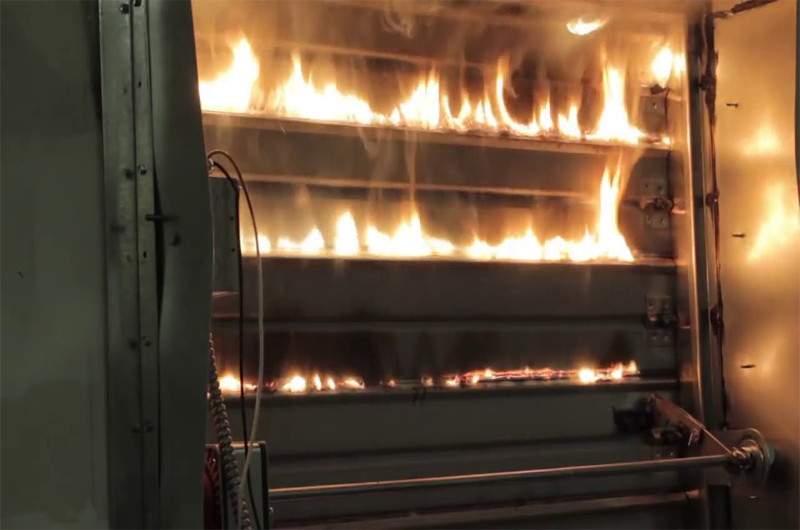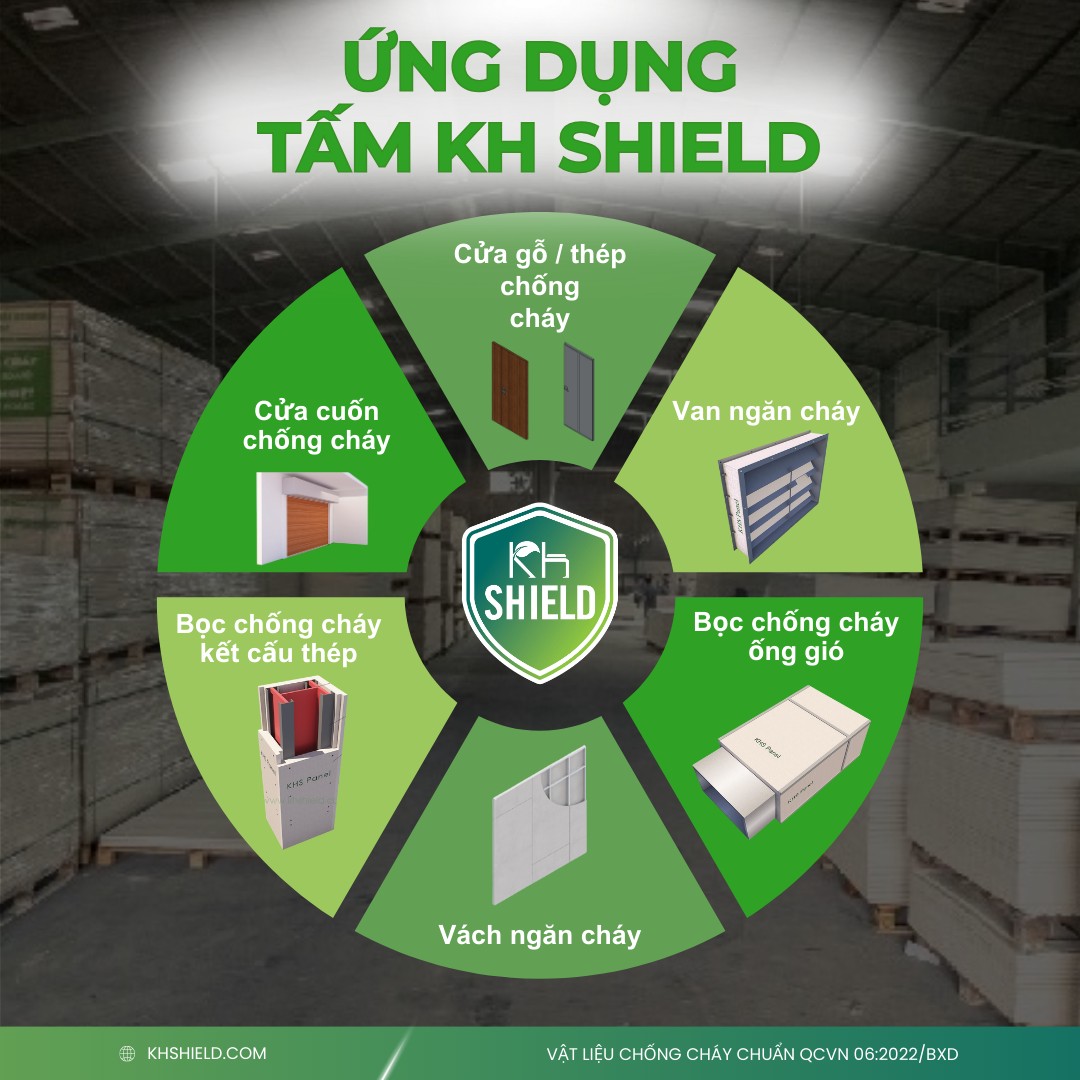
Thematic
Some regulations related to fire dampers by the Government
In today’s lifestyle demands, the ventilation system not only serves the function of air conditioning but also must adhere to fire safety standards. Among them, fire dampers are a novel solution that brings superior fire-resistant features to the ventilation system. So, what are fire dampers? What are the standards and testing procedures like?
What are fire dampers?

What is a Fire Damper in a Ventilation System?
In a ventilation system, various types of dampers play a significant role, each with its own distinct function, including:
- VCD dampers: Volume control dampers used for adjusting airflow in ducts.
- OBD dampers: Outlet balancing dampers used for adjusting airflow at diffusers.
- NRD dampers: Non-return dampers, automatically closing when airflow is reversed.
- FD dampers: Fire dampers, automatically closing in the event of a fire.
Depending on installation requirements, one or more types of dampers can be chosen to suit the situation. However, among these, fire dampers are the most crucial and indispensable component in any construction project or dwelling.
Fire dampers are typically installed in air ducts to connect different rooms or fire compartments. Their primary purpose is to prevent the spread of hot air or flames from a fire to adjacent areas. Currently, there are two main types of fire dampers available on the market: mechanical fire dampers and fusible link fire dampers.
- Mechanical fire dampers are equipped with sensors and automatic actuators. When a fire occurs, the actuators activate and close the damper. However, this solution is not widely used due to its relatively low efficiency and higher cost.
- Fusible link fire dampers are commonly preferred in most construction projects and residences. Instead of using motors, these dampers utilize a fusible link that melts at a temperature above 70°C. Once the link melts, an electric actuator is triggered, and the damper blades are closed by the pressure of a spring. Due to their construction, fusible link fire dampers offer optimal operational efficiency and cost less than 50% compared to mechanical fire dampers.
Testing Standards for Fire Dampers
Several testing standards for fire dampers are stipulated by the government, including:
- ISO 10294-1:1996 – Fire resistance test – Fire damper for air distribution system – Part 1. Test Method
- ISO 10294-2:1999 – Fire resistance test – Fire damper for air distribution system – Part 2. Classification, criteria, and field of application of test results
- ISO 10294-3:1999 – Fire resistance test – Fire damper for air distribution system – Part 3. Guidance on the test method
- ISO 10294-4:2001 – Fire resistance test – Fire damper for air distribution system – Part 4: Test of thermal release mechanism
According to QCVN 06:2022/BXD standards, fire dampers used in construction projects and residences must meet fire and insulation resistance capabilities based on E or EI standards in fire safety. Specifically:
- Ensure integrity (E): Fire dampers must maintain their structural integrity for a specified duration when exposed to fire.
- Ensure insulation (I): Fire dampers must demonstrate insulation capabilities for a specified duration when exposed to fire.
Testing Procedures for Fire Dampers

Fire Damper Application of KH Shield Insulation Tested at IBST
According to the Fire Fighting and Search and Rescue Police Department, the fire damper testing procedure is summarized as follows:
NỘI DUNG BÀI VIẾT
Test Sample Preparation
The test sample for the fire damper should be the largest size and determined by the manufacturer for future production. The test sample should represent the entire batch and include all installation components that affect usability.
Companies should prepare at least 2 test samples for each product, along with installation instructions for real-world scenarios. The results can be applied to smaller samples without further testing.
Conducting the Test
The testing unit measures the dimensions and installs the test sample before conducting the test. Subsequently, the unit proceeds to open and close the fire damper 50 times to identify initial damage. The fire damper burning test steps are as follows:
- Install the test sample in the combustion chamber and unlock the fire damper.
- Connect the test sample of the fire damper to measuring equipment.
- Turn on the exhaust fan to pass air through the damper at a speed of 0.15 m/s with a tolerance of ±15%.
- Turn off the exhaust fan while maintaining previous settings.
- Start the combustion chamber, ventilation fan, and measuring equipment.
- After 2 minutes, if the fire damper does not automatically close, the test ends. If the fire damper closes, maintain a pressure of -300 Pa and record the test results.
Determining Test Results
The test result values are based on the automatic opening and closing mechanism, smoke leakage (S), integrity (E), and insulation (I) calculated in minutes when the test sample does not exhibit at least one of the following phenomena:
Determining Integrity (E)
The test sample collapses completely or has flames for more than 10 seconds on the non-flaming surface.
The test sample exhibits gaps, and inspection reveals cracks or holes in the cushion pad with sustained flames.
Gaps on the surface exceed 6mm wide and penetrate 150mm or are 25mm wide.
Determining Insulation (I)
The test sample raises the temperature to 1400K above the initial average temperature (initial average temperature is the temperature measured on the non-flaming surface before the test).
The test sample raises the temperature to 1800K above the initial average temperature at any location…
Determining Smoke Leakage (S)
The test sample consistently maintains smoke leakage below 360 m3/h.m2 ISO 10294-3:1999.
Determining Automatic Opening and Closing Mechanism
The results of the automatic opening and closing mechanism test are based on ISO 10294-4:1999 and must occur within 2 minutes of starting the test.
Fire dampers are an effective fire prevention and insulation solution in the ventilation system of construction projects and residences. Choosing fire dampers that meet state inspection standards provides safety protection against fire and explosion hazards.
Update the latest topic
Update highlights

Consultation on fire and explosion prevention solutions














